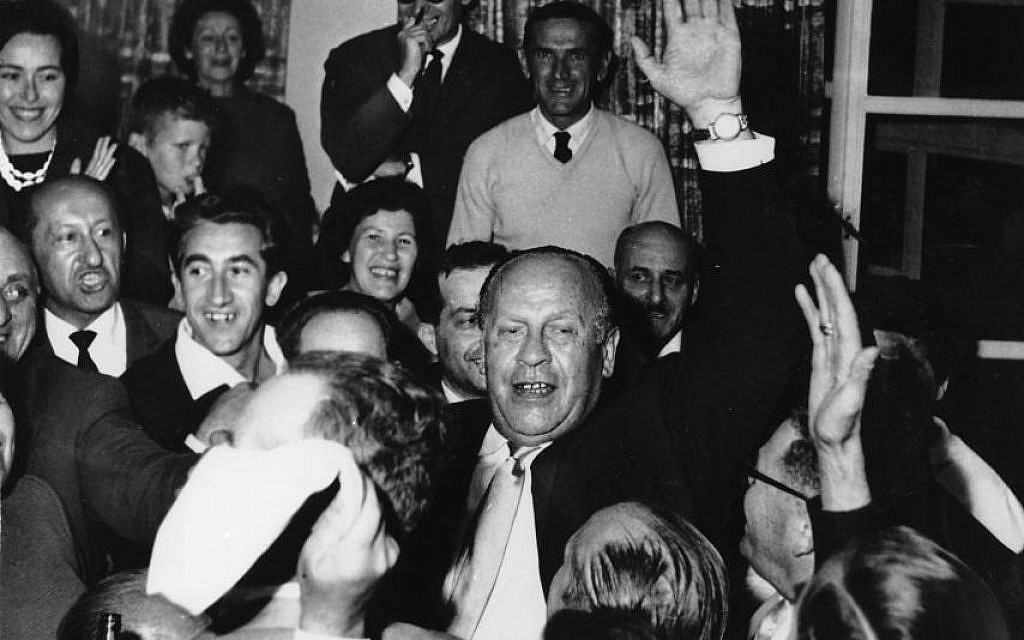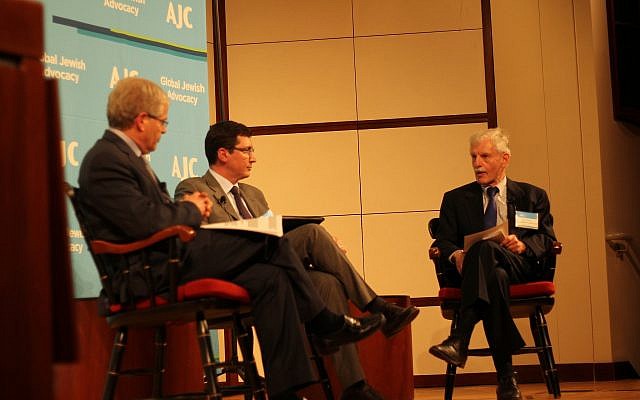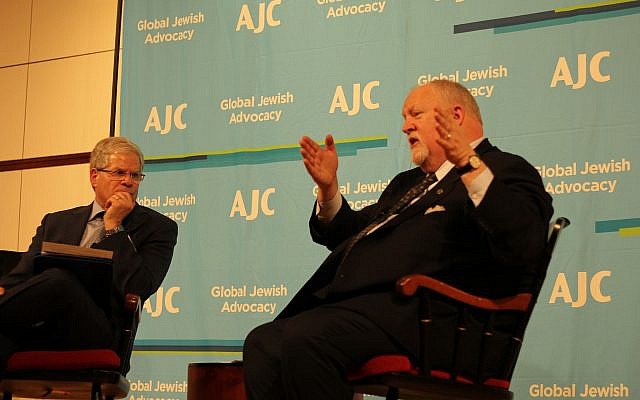To mark International Holocaust Remembrance Day, a conversation about individual efforts to rescue Jews from the Nazis’ ‘Final Solution,’ and why the accounts still resonate

BOSTON — Holocaust rescue accounts have long been deployed to “balance” the genocide’s horrific immensity, although relatively few people acted to save Jews in Nazi-occupied Europe. During an International Holocaust Remembrance Day commemoration held in Boston on Thursday, diplomats from several countries spoke about Holocaust rescue efforts and their relevance to current events.
“Rescue stories carry us away from grim reality, and bring us back to a more human dimension we can identify with,” said Nancy Harrowitz, a Holocaust studies professor at Boston University and one of several speakers to address the American Jewish Committee-organized gathering.
Although Holocaust rescue accounts can helps us envision “what we deeply desire humanity to be,” said Harrowitz, we must ask ourselves if rescue stories can also “lead us to ignore atrocities,” she said. “Do they betray as they give us hope?”
The Holocaust scholar said another question worth asking is, “How do we as a society foster rescuing, rather than betraying?” She noted that most rescuers — whether in the Holocaust or other genocides — make “emotional decisions, not logical ones.”
Speaking of the need to “never underestimate what happened” during the Holocaust, Italy’s consul-general to New England, Nicola De Santis, shared the rescue story of Maria Agnese Tribbioli, the mother superior of a convent in Florence who sheltered Jews from the Nazis.

For hiding and protecting Jews as “Communist refugees,” Tribbioli was recognized by Yad Vashem as one of Italy’s “righteous among the nations.” More than 26,000 individuals from 51 countries have received this recognition.
Like dozens of countries, Italy commemorates the Holocaust each year on January 27, the date when Auschwitz-Birkenau was liberated in 1945. When asked about the role of Holocaust education in Italy, De Santis referred to his country’s “strong literature and filmography” with regards to the murder of 8,000 Italian Jews in the death camps.
“The more time passes, the more the memory fades,” said De Santis, who spoke about the difficulty of explaining the mass murder of innocent people to children. He mentioned the film “Life is Beautiful” and the writings of Primo Levi as examples of how Holocaust memory has penetrated Italian culture.
According to Roger Brooks, president of Facing History and Ourselves, Holocaust-era rescue accounts should be used to “inspire” the cultivation of “upstanders” — people who take action when the basic rights of other groups are threatened. One way to do this, said the head of the Holocaust education organization, is to “bring it back to what is happening in our times,” said Brooks.

Among current dangers to civil society in the US, Brooks cited “when someone threatens to lock up the press” and “various groups that, day by day, are being marginalized.” He referred to last year’s events in Charlottesville, West Virginia, as a turning point when “two pernicious movements — white supremacy and neo-Nazism,” combined “to make each other stronger.”
Attacks on the press, educators and other “intellectuals” were among the first actions taken by the Nazis in occupied Poland, said Marek Lesniewski-Laas, honorary consul-general of Poland to New England. He noted the example of Krakow, a university city, where hundreds of professors and other Polish leaders were murdered soon after the German invasion.

“By way of destruction of history, they burned the archives in Warsaw,” said Lesniewski-Laas, whose remarks focused on Tadeusz Gebethner, a well-known Polish soccer player who died after sustaining injuries in the 1944 Warsaw Uprising. During the war, Gebethner sheltered Jews and helped some of them flee to Hungary, efforts for which Yad Vashem honored him posthumously.
Despite concerns expressed about the potential for rescue stories to obscure the totality of what took place during the Holocaust, the accounts can be used to “widen our lens” and “think about ways to meet the lessons of dark times today,” said Robert Leikind, director of American Jewish Committee’s New England chapter and event moderator.
“My brother and I owe our lives to these nameless, courageous people,” said Leikind, whose father spent the war on the run from the Nazis in occupied France. According to Leikind, his father would not have survived without assistance from — for instance — the head a mosque who gave him false identity papers, or countless townspeople who turned a blind eye to his presence in someone’s home.
“Even in times of overwhelming darkness, virtue can still survive,” said Leikind.

In several weeks, Israel’s diplomatic consulate in Boston will host an exhibit about 36 diplomats who helped save Jews during the Holocaust, according to consul Matan Zamir. Entitled “Beyond Duty,” the exhibit will appear at several dozen Israeli embassies and consulates around the world, coming on the heels of a memorial to the diplomats unveiled outside the Foreign Ministry in Jerusalem.
“[We seek] to inspire future generations of diplomats and also civilians to commit acts of great bravery and courage,” said Zamir of efforts to recognize diplomats who — for instance — issued visas for Jews to flee Europe, or alerted the world to the genocide as it unfolded.
As reported by The Times of Israel
